Description and characteristics of the strawberry variety Asia, yield and cultivation
Strawberries of the Asia variety have a lot of advantages, but the characteristics also indicate disadvantages. To get a large, sweet harvest, you need to pay a lot of attention to planting and caring for the crop. In the course of cultivation, the irrigation regime, the rules for the introduction of microelements and other agrotechnical methods must be taken into account. Strawberry propagation is carried out in three main ways.
Description and characteristics of strawberries Asia
The variety was bred by Italian breeders relatively recently. It is successfully cultivated in all regions of Russia. Thanks to its powerful roots, the variety resists frosts down to -16 degrees. If there is little snow in winter, then the plant should be covered with straw, spruce branches or fallen leaves.
The appearance of bushes and fruits
Strawberry bushes are large enough, erect. The leaves are large, light green in color, the surface is slightly wrinkled. The mustache is strong and thick, rather short.
The berries are large in size, weighing up to 45 g. But larger specimens can also be found. The shape of the fruit is different: rhomboid, elongated-conical or comb-shaped. The color of the berries is deep red with a glossy surface. The pulp is dense, there are no voids. The taste is sweet due to the high sugar content.
Productivity and ripening time
The strawberry variety belongs to early ripening crops. The first berries begin to ripen in early June. Fruiting lasts for a month. The harvest is numerous. Subject to all the rules of agricultural technology, up to 900 g of ripe berries can be removed from one bush.
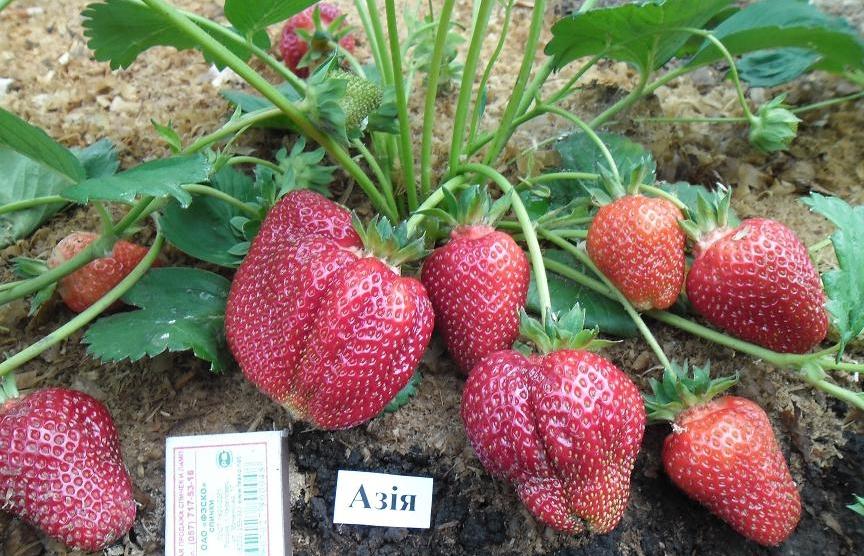
Flowering and pollination
Asia begins to bloom strawberries in the second half of May. On tall and strong shoots, many large peduncles are formed, most of which are female. The plant is partly self-fertile.
A good harvest of strawberries can be harvested when pollinated by insects. If Asia strawberries are grown indoors, then another variety must be planted nearby, which will become a pollinator.
Sustainability
Strawberries of the Asia variety are characterized by high resistance to diseases such as verticillosis, all types of spotting. But the plant is often affected by powdery mildew, anthracnose and chlorosis.

The variety is characterized by an average tolerance of dry days and severe frosts. Strawberries continue to develop in frosts down to -17 degrees, but provided there is a lot of snow. Otherwise, the root branches die off quickly and the plant dies.
Pros and cons of the variety
The positive qualities of strawberries include:
- high number of crops;
- persistent resistance to bacterial infections;
- the pulp of the berries is juicy and dense, can withstand transportation over long distances;
- the use of berries is universal.
Among the negative aspects of culture, the following characteristics are noted:
- does not withstand frosts below -16 degrees;
- poor tolerance of cold summer days;
- the culture is susceptible to fungal diseases;
- when grown in a greenhouse, taste is lost.
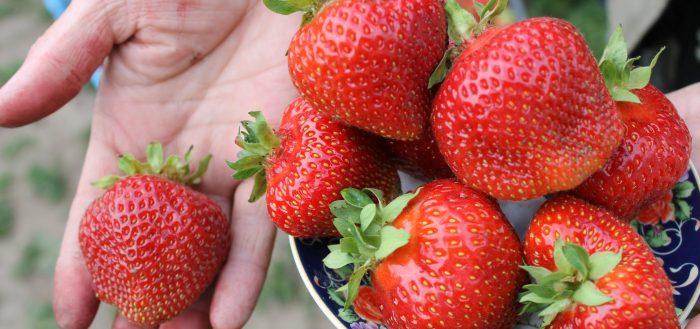
Landing features
When planting, it is important to leave a large distance between the bushes (about 38 cm). The ideal option is to plant in a checkerboard pattern, with this method all plants will receive enough light and nutritional components.
Immediately after planting strawberries, it is recommended to mulch the soil. Straw, sawdust, and hay are chosen as mulch. The thickness of the mulch must be at least 4.5 cm.
Planting time of seedlings
Strawberries are planted in spring or early autumn. Each season has its own advantages and disadvantages. The plant, planted in spring, quickly adapts and gains strength. But during the planting season, the crop is not formed. Bushes begin to bear fruit only after a year. In order for all the forces to go to the formation of greenery and roots, it is necessary to cut off the mustache and peduncles in the summer.
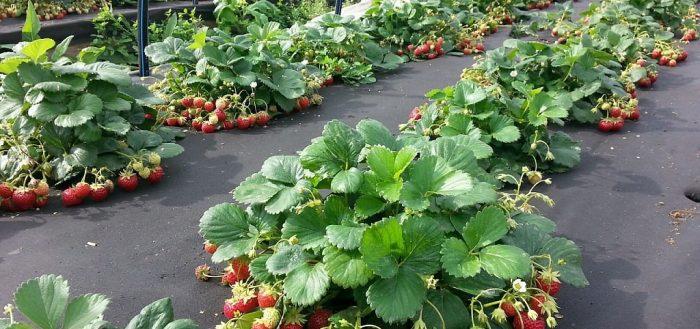
If you plant strawberries in the fall, you will be able to harvest the first crop in mid-June. The disadvantages include a high risk of freezing in the winter months, so you should take care of reliable insulation.
Site selection and soil composition requirements
When choosing a place for planting strawberries Asia, you should take into account some of the requirements of the crop:
- only a flat piece of land is suitable;
- light should fall on the site without obstacles (a short shadow is allowed at lunchtime);
- the beds must be protected from drafts;
- strawberries like loose, fertile soil with good aeration;
- if groundwater passes close, then they make an artificial hill.

12 days before the expected planting of the bushes, the earth is dug up, plant residues are removed and fertilizers are applied. A mixture of humus, wood ash, urea and river sand is considered an ideal option.
Planting young strawberry seedlings
Planting strawberries is carried out subject to the following step-by-step actions:
- 10 days before planting, the site is disinfected using a solution of copper sulfate;
- at a distance of 38 cm, dig holes with a depth of 22 cm;
- the indent between the rows is 75 cm;
- fertilizer is applied to each recess;
- at the bottom of the hole they make a mound and put seedlings on it, spreading the roots;
- covered with earth and slightly compacted.
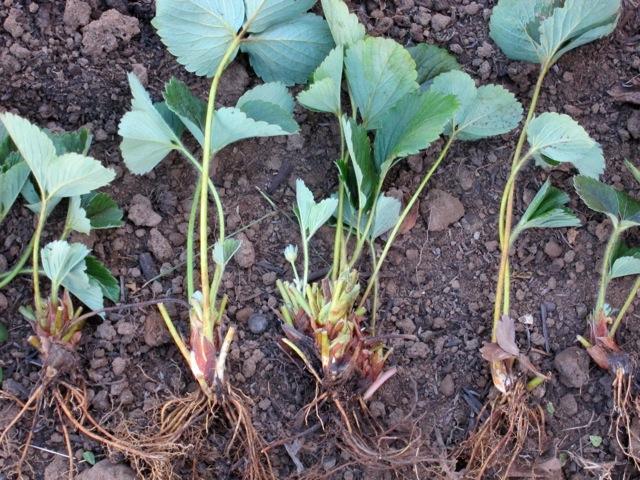
Features of care and reproduction
Strawberry development largely depends on the quality of care. The propagation of bushes must be carried out correctly so that the strawberries quickly adapt to a new place and continue to grow.
How to water
Strawberries can withstand a lack of moisture for a couple of days, but this should not be allowed. In hot and dry weather, it is advisable to water the beds every three days. For each bush, about 2.8 liters of water are counted. Watering should be done only in the morning or evening. Before flowering, watering is carried out by sprinkling. During the flowering period, moisture should be avoided on the green part of the plant.
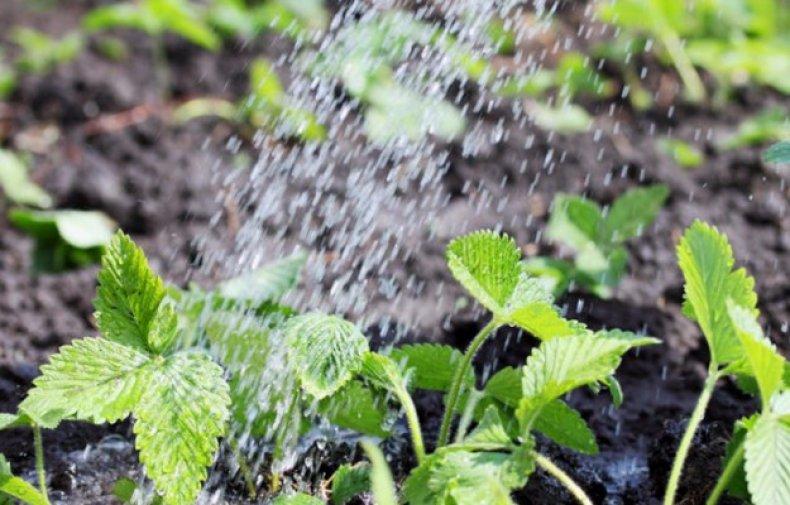
Weed control
It is important to prevent the growth of weeds in strawberry beds, especially at the stage of berry formation. Weeds create shade and increase the risk of spreading disease.
Against weeds, drugs such as "Sinbar", "Select", "Prism", "Fuzilad", "Devrinol" are used.
Loosening and hilling of the soil
After each watering, it is recommended to loosen the soil so that a dry crust does not form. Thanks to the procedure, air and micronutrients in sufficient quantities and without obstacles penetrate the underground part of the plant. Hilling is carried out after loosening in the spring and autumn. It helps to strengthen the root system, improve air access to the underground part of the plant and remove weeds.
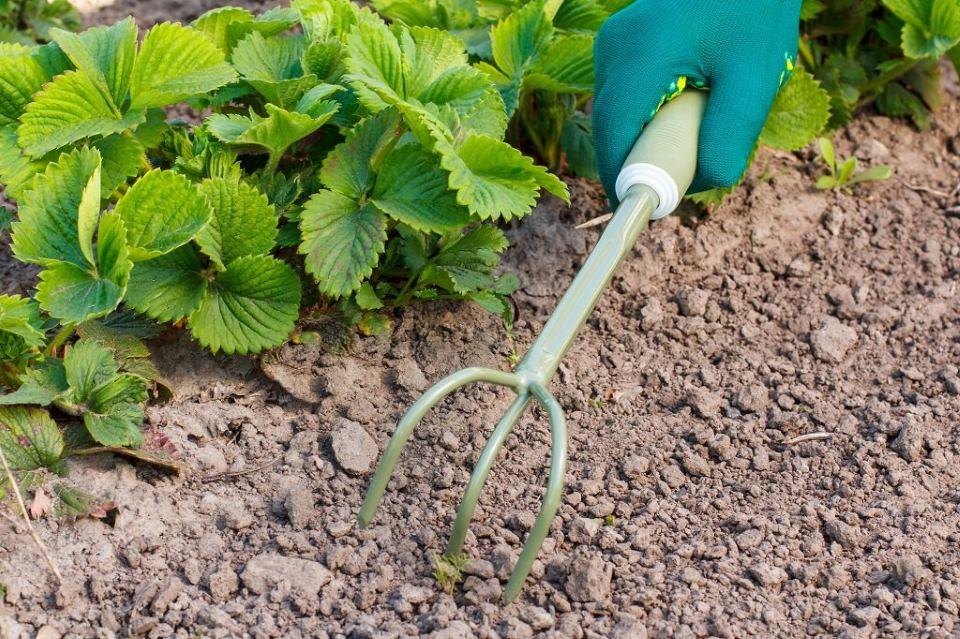
Fertilization
During the growing season, strawberries Asia needs several feeding:
- Nitrogen-based formulations are applied immediately after planting. The component promotes the development of green mass. A slurry made from bird droppings or mullein is suitable.
- Before the beginning of the flowering period, it is recommended to water the beds with a solution of urea and wood ash. Additionally, spraying on greens with a solution based on Agricola and Ovary is carried out.
- After harvesting, the next top dressing is carried out. It is useful to add a composition of potassium and boron.
- In the fall, humus or compost is laid out around each bush, and it is also useful to add a solution with superphosphate.
When applying fertilizers, the dosage should be strictly observed. The excess, as well as the lack of trace elements, leads to the development of fungal diseases.
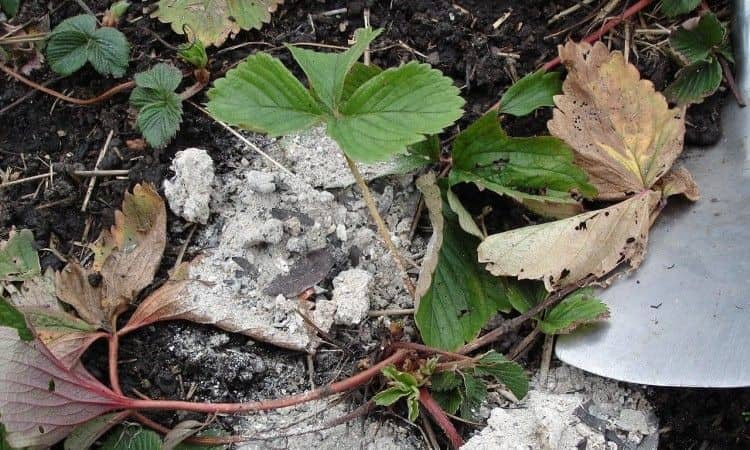
Shelter for the winter
They begin to cover strawberry bushes for the winter after the temperature is set below -5 degrees. The plants are covered with straw, spruce branches, fallen leaves, and hay. Experienced summer residents install arcs over the beds, onto which they stretch the covering material.
Reproduction
Strawberry variety Asia is able to reproduce by stepchildren, dividing the bush and seeds. The last method is the most difficult.
Stepsons
The most common way to breed strawberries is with a mustache:
- In bushes that are two years old, the peduncles should be cut off so that all the nutrients go to the stepsons.
- The mustache is pressed to the ground and secured with staples.
- Only one outlet is left on the shoot.
- In July, the rosettes will take root, and the shoots are cut off from the bush.
- In early autumn, the bush can be transplanted to a new location.
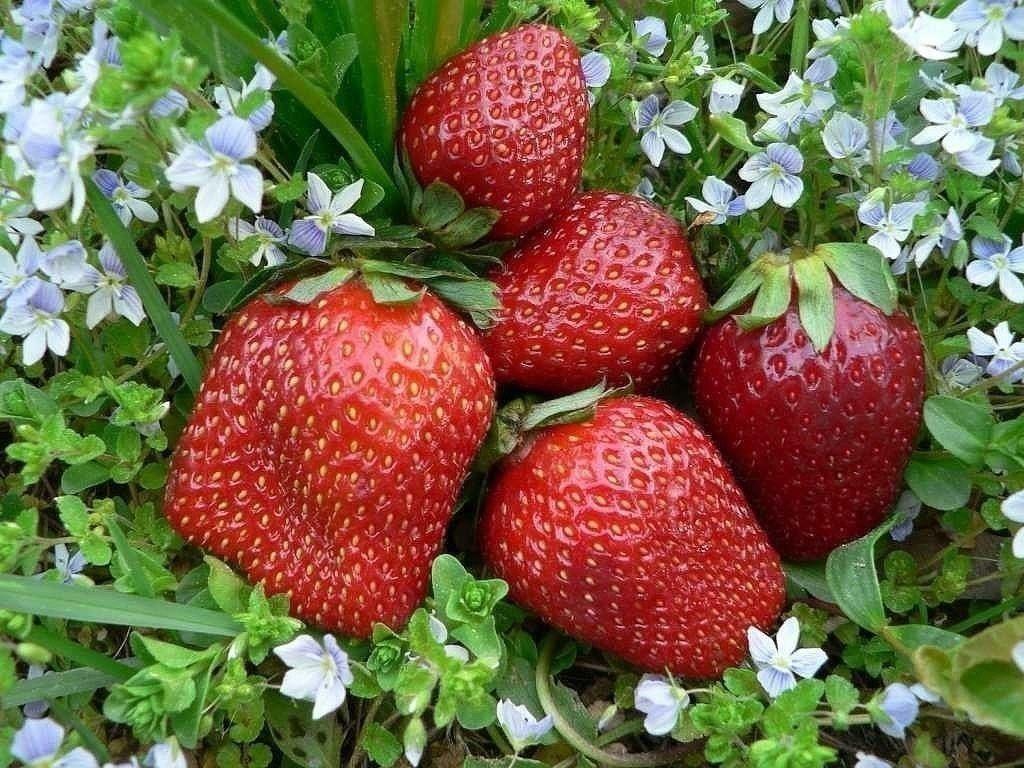
Since the mustache of the Asia variety is formed little, it is better to use the breeding method by dividing the bush.
Seeds
Seed propagation is the most difficult. Landing requires compliance with some rules:
- 3.5 months before planting, the seeds are moved to a cool place at a temperature of +2 degrees;
- before sowing, the seeds must be thoroughly dried;
- in January they start sowing seeds for seedlings;
- the container is placed on a well-lit windowsill;
- the room temperature should be at least +20 degrees;
- seedlings begin to be transplanted into open beds at the end of May.
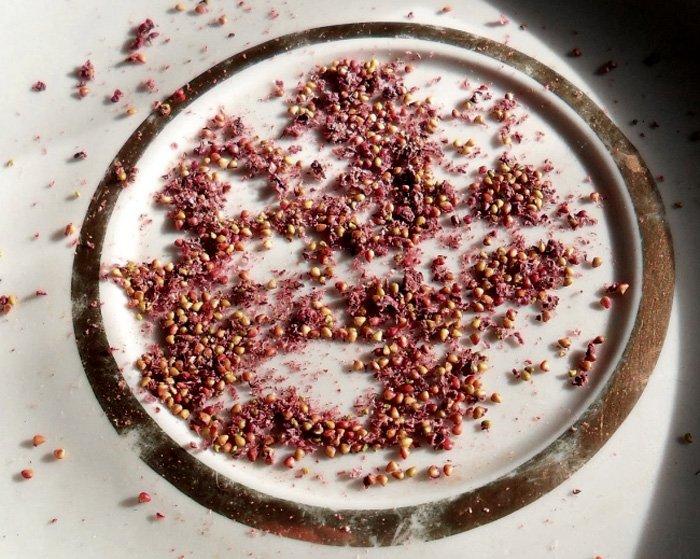
Dividing the bush
For reproduction, they take a bush that is three years old. Divide it into several parts. Each separated bush should have healthy root branches and a few leaves. Prepared seedlings are planted in the garden in early September.
Diseases and pests
Strawberries of the Asia variety are often attacked by such pests as strawberry mites, aphids, sawflies, nematodes, and weevils. In the fight against insects, drugs such as "Karbofos", "Chlorofos" will help.
As a preventive measure, strawberries are sprayed with Bordeaux liquid, as well as Hom and Horus preparations. Before flowering, use the drug "Neoron". To strengthen the immunity of strawberries, processing is carried out with "Zircon".
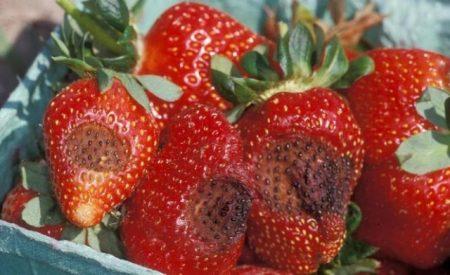
Strawberry bushes are often affected by powdery mildew, gray mold, brown spot. The drug "Topaz", "Baylon" helps to cope with the infection.
Harvesting and storage
Ripe berries are easily separated from the stalk.If the harvest is supposed to be stored or transported to another place, then the berries are picked a little unripe along with the stalk. The harvested crop is laid out in boxes or boxes.
The berries are stored for three days at a temperature of 0-2 degrees. If a longer storage is required, then the berries are frozen or various sweet dishes are made from them.
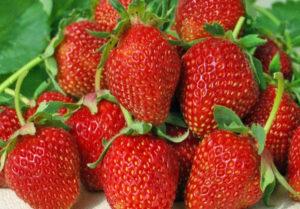
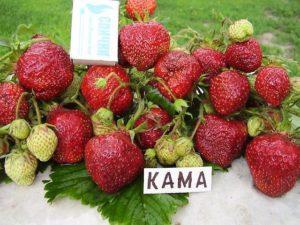



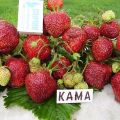

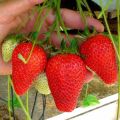
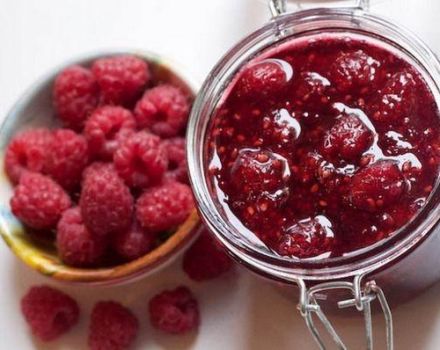
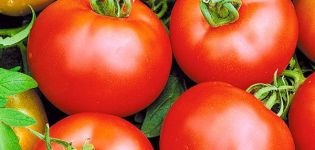
This strawberry variety is very sweet, no special fertilizers are needed, this berry grows well without it. She loves water, so do not let the soil dry out. This is one of the most beloved varieties.